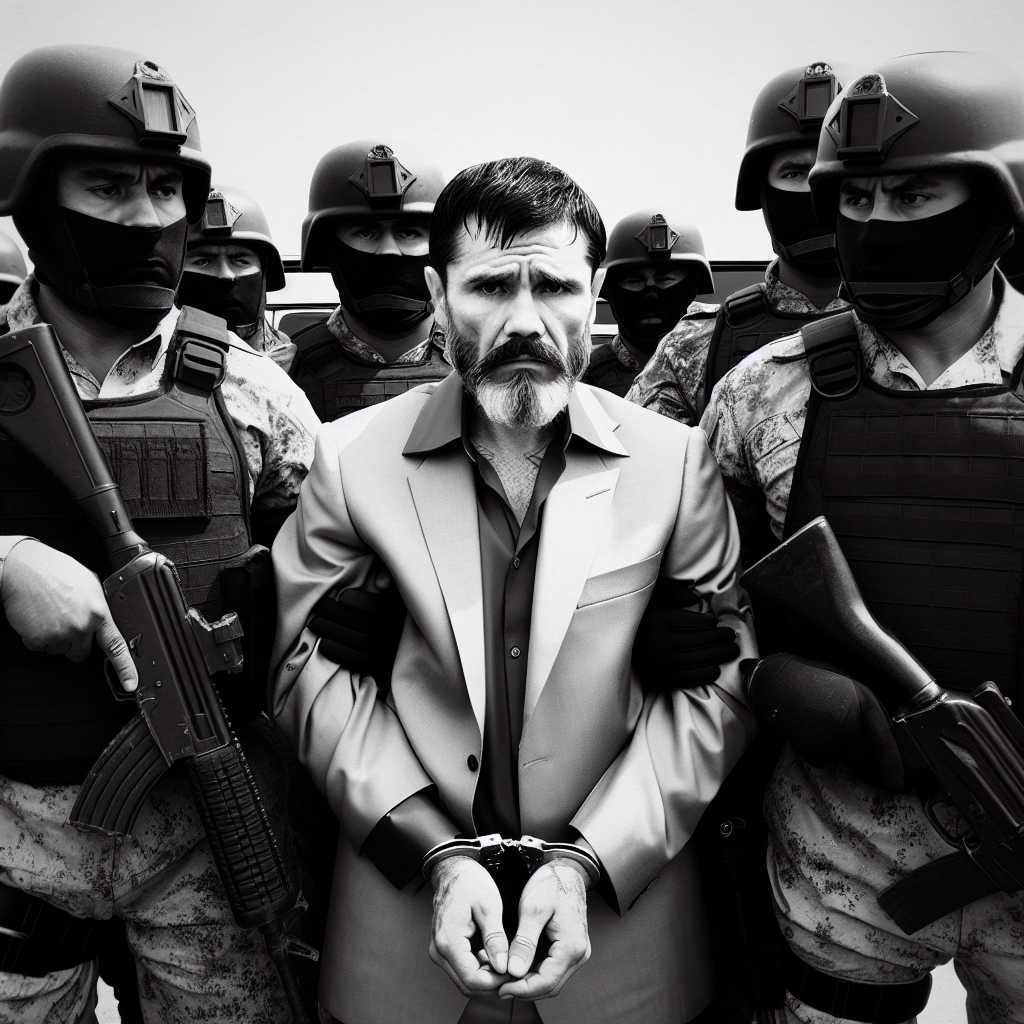The Rise and Fall of Joaquín “El Chapo” Guzmán: An Overview of the Mexican Drug Lord’s Infamous Career
Joaquín Archivaldo Guzmán Loera, known by his moniker “El Chapo” which translates to “Shorty” due to his stature, is one of the most infamous drug lords in history. His life has been marked by his ascent within the criminal underworld, his leadership of the Sinaloa Cartel, his notorious escapes from high-security prisons, as well as his eventual capture and extradition to the United States. This article aims to cover the key elements of El Chapo’s career, giving a comprehensive overview without any political bias or personal opinions.
Early Life and Entry into Drug Trafficking
Born on April 4, 1957, in La Tuna, Badiraguato Municipality, Sinaloa, Mexico, Joaquín Guzmán grew up in a poor farming family. The rugged terrain of Sinaloa and its position as a key location for drug cultivation made it a hotbed for drug trafficking operations. Guzmán’s entrance into the drug trade was almost predicated by his surroundings and family connections within the industry.
Guzmán harnessed these connections to rapidly climb the ranks within the organized crime world. In the 1980s, he began working for Miguel Ángel Félix Gallardo, who led the powerful Guadalajara Cartel at the time. Upon the breakup of this cartel in the late 1980s, El Chapo took part of the territory and established his own group that would evolve into the Sinaloa Cartel.
Path to Headship: The Birth of the Sinaloa Cartel
As leader of the Sinaloa Cartel, Guzmán became key in operating complex systems for transporting cocaine from Colombia through Mexico and into the United States. Not only did the Sinaloa Cartel traffic cocaine, but it also distributed methamphetamine, marijuana, MDMA (ecstasy), and heroin across various international markets.
Despite or perhaps because of the violent and competitive nature of narcotics trafficking, El Chapo’s cartel grew in size and power. His methods included pioneering smuggling techniques, using technology creatively for coordinating logistics, aggressively expanding territory via conflict with other cartels, as well as forming both opportunistic and strategic alliances.
Legend of Escapes: High-Profile Prison Breaks
The notoriety of El Chapo wouldn’t be as pronounced without mention of his audacious prison escapes. Guzmán was arrested in Guatemala in 1993 and subsequently extradited to Mexico where he was sentenced to over 20 years in prison on charges including drug trafficking and murder.
Despite his incarceration, Guzmánl’s influence remained extensive, allowing him to live comfortably through bribes and maintaining control over his cartel. His first escape came in 2001 when he purportedly hid in a laundry cart within the high-security prison Puente Grande. He was on the run for thirteen years until he was apprehended in February 2014.
Lodged once more behind bars, Guzmán accomplished another spectacular breakout in July 2015 from Altiplano prison – at the time considered one of the most secure facilities in Mexico – through an elaborately constructed underground tunnel leading to his cell shower.
Capture and Extradition: The Instance U.S. Prosecution
The last escape succeeded only in providing El Chapo a short-term reprieve. By January 2016, he was recaptured through a sophisticated joint operation between Mexican authorities and international agencies. Following legal battles over extradition laws and human rights claims from Guzmán’s defense team, he was finally extradited to the United States on January 19, 2017.
Guzmán facing charges spanning from international drug trafficking to conspiracy for leading a continuing criminal enterprise endured a high-profile trial in New York City which resulted in his conviction on all counts on February 12, 2019. He was sentenced to life imprisonment plus 30 years and is currently incarcerated in a US supermax prison.
Impact on Mexico and Global Drug Trade
While El Chapo’s story might reflect an individual criminal saga characterized by daring actions against state authority, it also touches upon wider issues prevalent in the global war on drugs. The power struggle following Guzmán’s capture led to spikes in violence within Mexico as factions vied for control over key trafficking corridors. Moreover, many experts suggest that despite El Chapo’s trial and incarceration, drug flow into primary consumer markets like the United States has not substantially decreased.
Notes
*Image description: A monochrome image depicting Joaquín “El Chapo” Guzmán surrounded by Mexican security forces during one of his captures; he wears handcuffs while law enforcement officials wearing bulletproof vests stand guard.*

